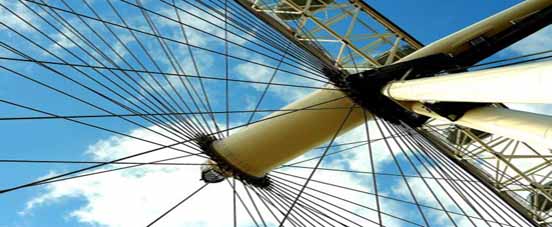Hub and Spoke Model
What is common to Singapore, Dubai, Frankfurt, and London? All of them have mastered the art of hub and spoke model and have revolutionised the way airline industry functions across the globe. Each of these centres has their own advantages and has developed a hub which every country now wants to emulate. This not just gets in more tourists into the country but in a way improves the economy of the country as well. So we try to figure out the operational strategies which make this model most talked about and also successful.

In simple terms hub and spoke model is a system which makes transportation efficient and also simplifies the network of routes. This has been used commonly in aviation industry but it need not necessarily be restricted to aviation. This was first pioneered by Delta Airlines way back in 50's but was extensively used by FedEx in 70's. This model is named after a bicycle wheel because an airline routes the passengers from different parts to a central hub and then transports them to other parts of the world. For e.g. Emirates gets passengers from different places to Dubai which is the hub. Then all the passengers travel to their desired location from this hub. Routing traffic this way makes the operation of an airline efficient. But it also frustrates the passengers as they are deprived of a direct flight which also means wastage of a lot of time to passengers.
So then what are the advantages of this model? Centralised approach is always effective in any industry and it is no different in airport operations as well. This helps in reducing the staff required for managing the operations of an airline. Even for a cargo airline the hub can act as a central warehouse where they get all the packages, sort it and send it to the destination. For the airline company it helps in managing their operations better and ensuring full capacity in most of their network. This helps the country where the hub is located as well as since the transit time is usually a couple of hours; the passengers would shop at the duty free thereby increasing domestic revenues. Some countries also give transit visa for the passengers to take a tour of the country. This naturally helps the local economy.
There are disadvantages as well with the hub and spoke model. Any disruption in the incoming flight can cause delays in the entire hub. The smoothening of the delays and restoring normalcy across the hub would take a lot of days. So operational management is the key in managing the hub. Further passengers are usually left waiting for a long time at these hubs as the connecting flights to some place are far in between. There is also a need to establish a strong native airline for the hub to function properly. If not the connectivity suffers and people are left disgruntled.
The hub and spoke model requires excellent operational management for it to succeed. India has failed to develop a hub and still relies on basically point to point traffic. That is the main reason why the airlines here suffer and a large chunk of traffic from here is routed through Dubai, Europe or Singapore. The airlines from these countries post record profits whereas our airlines are in deep red. Though there is no direct correlation but yes it does bring in more traffic which in turn means more revenues. The model is indeed successful and is now being slowly translated to other sectors as well.
The article has been authored by the editorial team. The content on MBA Skool has been created for educational & academic purpose only.
If you are interested in writing articles for us, Submit Here
Share this Page on:
What is MBA Skool?About Us
MBA Skool is a Knowledge Resource for Management Students, Aspirants & Professionals.
Business Courses
Quizzes & Skills
Quizzes test your expertise in business and Skill tests evaluate your management traits
All Business Sections
Write for Us